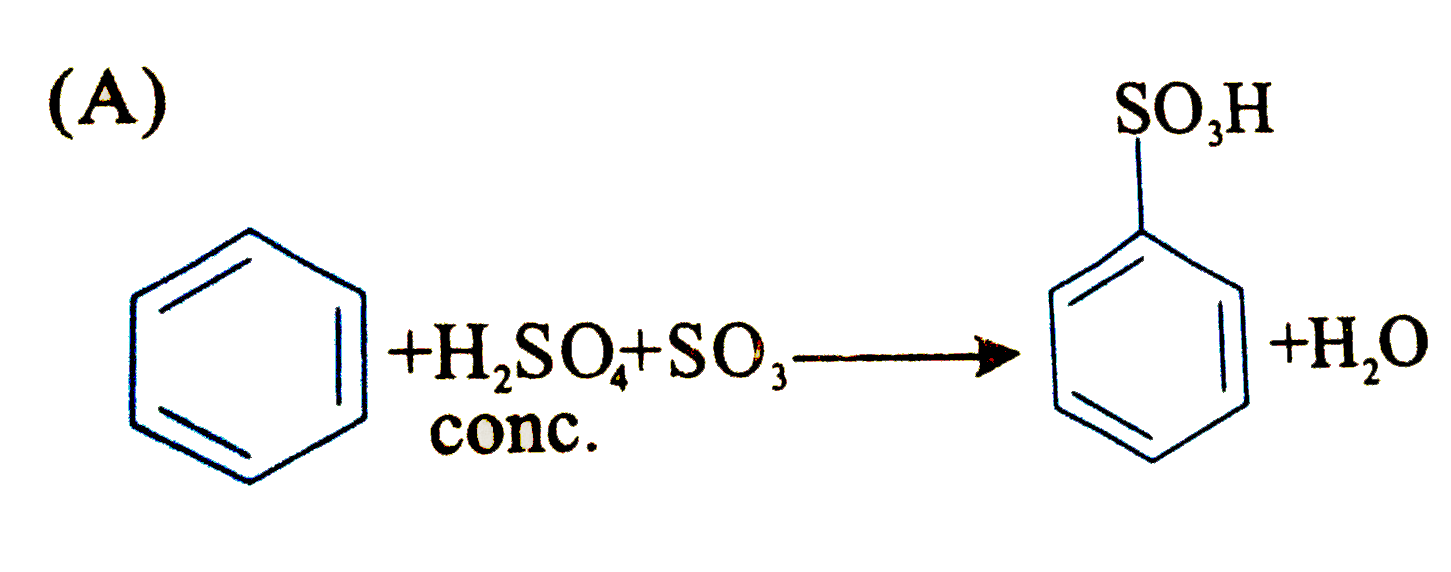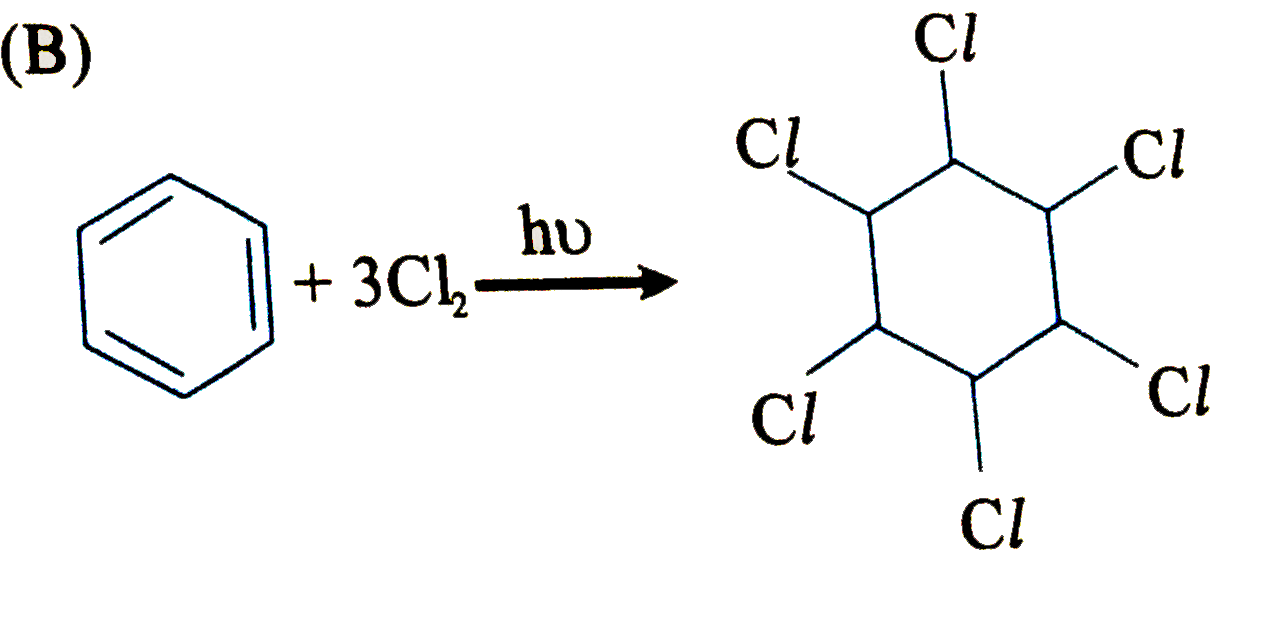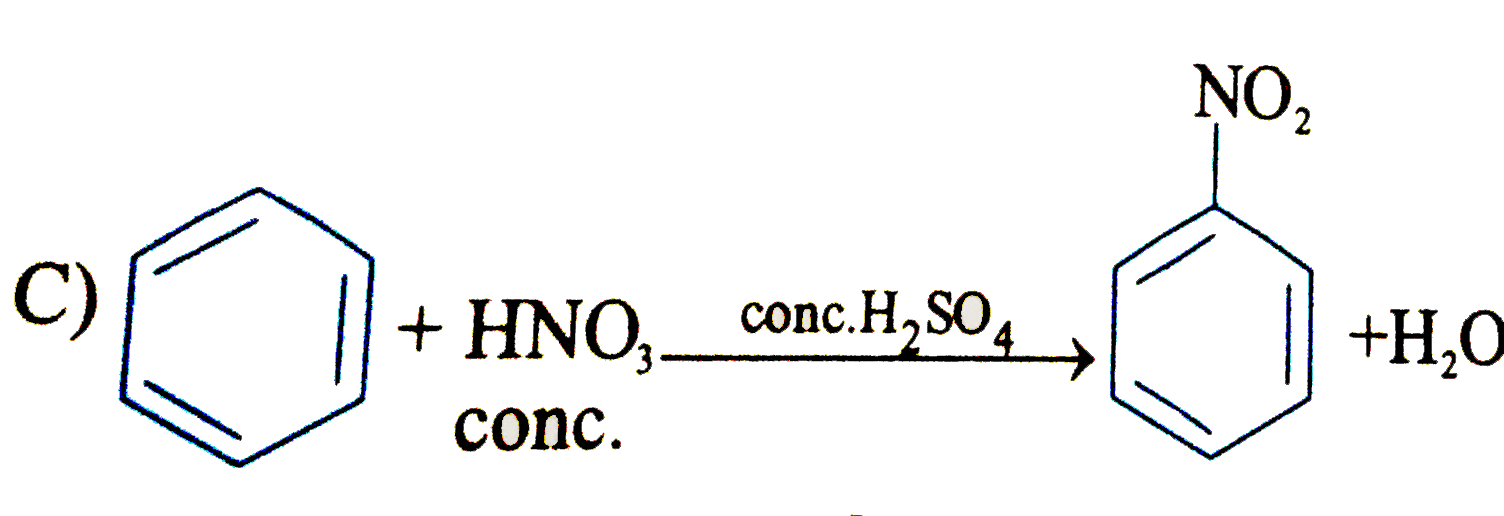Which of the following undergoes electrophilic substitution reactions faster than benzene?
Phenol
Aniline
benzoic acid
Nitrobenzene
The correct Answer is:A, B
To determine which of the given substances undergoes electrophilic substitution reactions faster than benzene, we need to analyze the substituents on the benzene ring in each option and their effects on the electron density of the ring.
1. Understanding Electrophilic Substitution:
- Electrophilic substitution reactions involve the attack of an electrophile on a nucleophile. In the case of benzene, the π bonds act as nucleophiles.
2. Analyzing Benzene:
- Benzene has a stable structure with delocalized π electrons. The rate of electrophilic substitution is influenced by the electron density on the benzene ring.
3. Identifying the Options:
- We have four options to analyze:
- A) Phenol
- B) Aniline
- C) Benzoic Acid
- D) Nitrobenzene
4. Option A: Phenol:
- Phenol has a hydroxyl (–OH) group attached to the benzene ring. The –OH group has lone pairs of electrons that can be donated to the ring, increasing the electron density. This makes phenol more nucleophilic than benzene, leading to a faster electrophilic substitution reaction.
5. Option B: Aniline:
- Aniline has an amino (–NH2) group attached to the benzene ring. Similar to phenol, the –NH2 group has lone pairs that can increase the electron density of the ring. This also makes aniline more nucleophilic than benzene, resulting in a faster reaction.
6. Option C: Benzoic Acid:
- Benzoic acid has a carboxylic acid (–COOH) group. This group is electron-withdrawing due to resonance and inductive effects, which decreases the electron density on the benzene ring. As a result, benzoic acid is less nucleophilic than benzene, leading to a slower electrophilic substitution reaction.
7. Option D: Nitrobenzene:
- Nitrobenzene contains a nitro (–NO2) group, which is a strong electron-withdrawing group. This significantly decreases the electron density on the benzene ring, making it much less nucleophilic than benzene. Therefore, nitrobenzene undergoes electrophilic substitution much slower than benzene.
8. Conclusion:
- From the analysis, we find that options A (Phenol) and B (Aniline) undergo electrophilic substitution reactions faster than benzene, while options C (Benzoic Acid) and D (Nitrobenzene) do not.
Final Answer:
Phenol (A) and Aniline (B) undergo electrophilic substitution reactions faster than benzene.
---
- Electrophilic substitution reactions involve the attack of an electrophile on a nucleophile. In the case of benzene, the π bonds act as nucleophiles.
- Benzene has a stable structure with delocalized π electrons. The rate of electrophilic substitution is influenced by the electron density on the benzene ring.
- We have four options to analyze:
- A) Phenol
- B) Aniline
- C) Benzoic Acid
- D) Nitrobenzene
- Phenol has a hydroxyl (–OH) group attached to the benzene ring. The –OH group has lone pairs of electrons that can be donated to the ring, increasing the electron density. This makes phenol more nucleophilic than benzene, leading to a faster electrophilic substitution reaction.
- Aniline has an amino (–NH2) group attached to the benzene ring. Similar to phenol, the –NH2 group has lone pairs that can increase the electron density of the ring. This also makes aniline more nucleophilic than benzene, resulting in a faster reaction.
- Benzoic acid has a carboxylic acid (–COOH) group. This group is electron-withdrawing due to resonance and inductive effects, which decreases the electron density on the benzene ring. As a result, benzoic acid is less nucleophilic than benzene, leading to a slower electrophilic substitution reaction.
- Nitrobenzene contains a nitro (–NO2) group, which is a strong electron-withdrawing group. This significantly decreases the electron density on the benzene ring, making it much less nucleophilic than benzene. Therefore, nitrobenzene undergoes electrophilic substitution much slower than benzene.
- From the analysis, we find that options A (Phenol) and B (Aniline) undergo electrophilic substitution reactions faster than benzene, while options C (Benzoic Acid) and D (Nitrobenzene) do not.
Phenol (A) and Aniline (B) undergo electrophilic substitution reactions faster than benzene.
Topper's Solved these Questions
- BOOK - MODERN PUBLICATIONCHAPTER - HYDROCARBONSEXERCISE - COMPETITION FILE (OBJECTIVE TYPE QUESTIONS) (MULTIPLE CHOICE QUESTIONS based on the given passage/comprehension)9videos
HYDROCARBONS
- BOOK - MODERN PUBLICATIONCHAPTER - HYDROCARBONSEXERCISE - COMPETITION FILE (OBJECTIVE TYPE QUESTIONS) (Integer Type Questions)4videos
HYDROCARBONS
- BOOK - MODERN PUBLICATIONCHAPTER - HYDROCARBONSEXERCISE - COMPETITION FILE (OBJECTIVE TYPE QUESTIONS) (MULTIPLE CHOICE QUESTIONS from competitive examinations (JEE (Advance) for IIT Entrance))4videos
HYDROCARBONS
- BOOK - MODERN PUBLICATIONCHAPTER - HALOALKANES AND HALOARENESEXERCISE - UNIT PRACTICE TEST12videos
HALOALKANES AND HALOARENES
- BOOK - MODERN PUBLICATIONCHAPTER - HYDROGENEXERCISE - UNIT PRACTICE TEST (for Board Examination)9videos
HYDROGEN
Similar Questions
Knowledge Check
- Question 1 - Select One or More
Which of the following undergoes electrophilic substitution reactions faster than benzene?
APhenolBAnilineCtolueneDChlorobenzene - Question 2 - Select One or More
Which of the following is an electrophilic substitution reaction?
A B
B C
C D
D
- Question 3 - Select One
The ether that undergoes electrophilic substitution reactions is
ACH3OC2H5BC6H5OCH3CCH3OCH3DC2H5OC2H5
Which of the following is most reactive for electrophilic substitution reaction
View SolutionThe ether that undergoes electrophilic substitution reactions is
View SolutionThe ether that undergoes electrophilic substitution reactions is
View SolutionThe ether the undergoes electrophilic substitution reaction is
View SolutionWhich of the following compound undergo nucleophilic substitution faster?
View Solution
